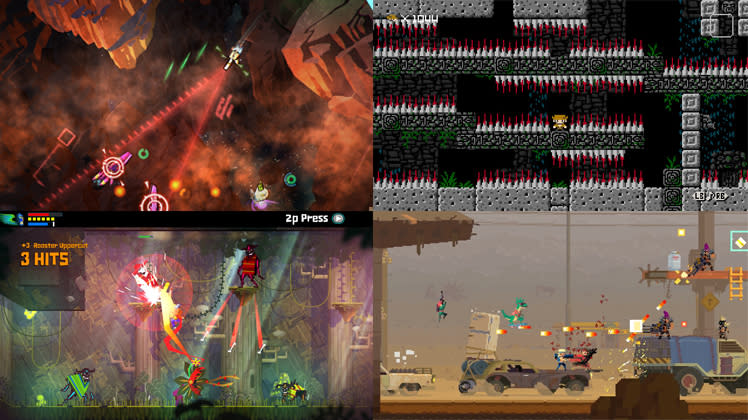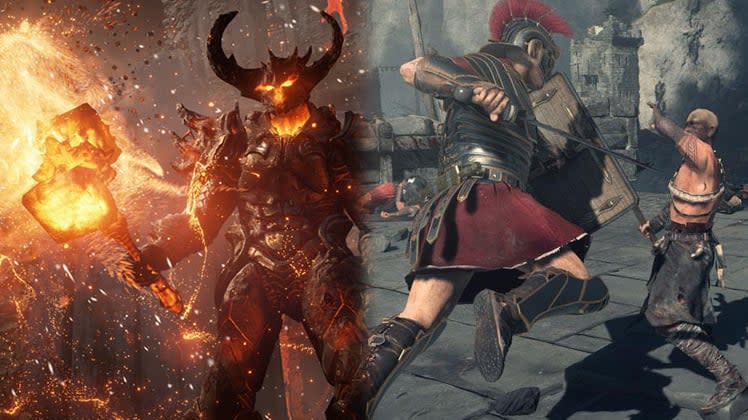Top five trends stemmed from this year’s GDC
With the year’s biggest game developer gathering over and done with, what were the biggest trends that would change the face of the games industry in 2014 and beyond?
The Game Developers Conference 2014 was the place to be — whether you’re an Asian game developer trying to make it big or a big-time producer from Europe wishing to learn more about your game-making craft from other luminaries. With so many big announcements and many interesting topics and panels ripe for discussion, it was a mecca for those seeking knowledge and wishing to keep up with oncoming game trends.
Speaking of which, here’s a Cliffs Note edition of game-related highlights that cropped up from March 17 to March 21, 2014. We suspect that these future trendsetting news will catch on, but you can be the judge of that after checking out our list.
Virtual Reality commercialisation
Image credit: Sony Computer Entertainment
Sony’s announcement of Project Morpheus, a Virtual Reality (VR) headset for the PS4, was the company’s step towards making the VR concept commercially-viable and easy-to-use. The company wished to take all recent advancements of VR and make it consumer-friendly. There’s no price and launch date, but the company seems gung-ho about pushing this as the future of gaming.
On the PC front, VR tech developers Oculus showed off the new Oculus Rift Dev Kit 2 with its 900-by-1080 pixel screens and low-persistence OLED panel, with the the latter feature used to help lessen motion sickness for users. GameFace was also another VR headset based on Android programming that was self-contained and didn’t need additional hook-ups. According to Polygon, the prototype showed promises of being truly portable, and has “full HD screens” split between two eyes.
Despite the tech still in its infancy, it’s good to know that many publishers and startups are pushing towards making VR’s immersion factor a prospective enhancement for mainstream gaming culture. We’ve gone way past the days where crude VR tech like Nintendo’s Virtual Boy was the only tech close to capturing that in-your-face feel.
Triple-A developers leaving for free pastures

Image credit: Rock, Paper Shotgun + Microsoft
Ken Levine, Peter Molyneux, Koji Igarashi: these are the names of high-profile developers who left big game developer companies under the watchful eye of giant game publishers. With so much behind-the-scenes unplanned crunch periods and internal politics that can possibly tear up games and lengthen development time, it’s only a matter of time until developers had to get out from such situations so that they don’t hate what they love doing.
Peter Molyneux (Fable, Black & White) said on his panel that he wanted to go back to being an independent game creator group because he wanted risk and danger more than security from a big publisher like Microsoft. BioShock Creator Ken Levine talks about building a new narrative structure where non-playable characters react organically to players, an idea that may not have flied with a bigger and restrictive studio. Koji Igarashi, the main Creator of Castlevania: Symphony of the Night, declared during his GDC talk that he’s able to do the games he wish without adhering to his previous company Konami’s wishes.
Coincidentally, other developers formed small groups during the period of GDC so that they can get on with what they really want to do. Case in point, the recent formation of Tangentlemen that consists of developers who worked on Yaiba: Ninja Gaiden Z, Spec Ops: The Line and Tomb Raider. While big publishers aren’t going to dissipate anytime soon, it’s clear as day that developers of the late 90s and 2000s need a fresh perspective and regain their hunger for game design without corporate shackles.
The already-growing rise of indie games

Clockwise from top left: Galak-Z, 1001 Spikes, Super Time Force, Guacamelee: Super Turbo Championship Edition.
The major players in the console field, Microsoft and Sony, established dominance in the indie gaming field for consoles during GDC 2014. The creators of the Xbox One announced more independent developers who signed up for the ID@Xbox programme. With 25 games making headway to the giant console, it’s playing catch-up with Sony.
Speaking of which, Sony PlayStation talked about its ongoing indie initiative. Over 100 indie titles are in development for the PlayStation 4. A Sony-exclusive engine called PhyreEngine was an internally-created solution for developers to port PS3 games over to PS4, or just make new titles from scratch. The popular game engine Unity has seen little to no problems for developers wishing to port games to the PS4, according to the upcoming game Galak-Z’s lead engineer Zach Aikmen.
It’s way too soon to tell if the concept of banking on just one publisher to promote the console version of your game is a foolproof plan. However, you can’t fault both, Sony and Microsoft for not stepping up and supporting small-time developers.
More engine options for game-building

Read Also: From Crytek to Brain+: Rasmus Højengaard’s startup journey
The announcement of a new Unity engine was heralded as a “massive update” to the multi-platform game engine and toolkit, offering cross-promotion for mobile games via Unity Cloud. However, it was the bigger game engine makers that stole the thunder.
First up was Epic Games’ Unreal Engine 4 subscription-based plan. Here, developers pay US$19 per month and a five per cent gross revenue from their future Unreal-powered game, all for full access to the engine’s toolset and C++ source code. The catch? It’s only restricted to PC, Mac, iOS and Android projects; nothing on console development at this point in time.
Game developer Crytek countered by offering its “engine-as-a-service” program for its CryEngine tool. For just US$9.90 with no royalties, developers can use the engine for their games on any platform, including new current-gen consoles like the PlayStation 4 and Xbox One.
It’s really debatable as to which offer is the best; both make games look great in their own right, and it’s usually up to the developer’s skill to maximize its potential. The subscription model adds up higher in the short term, but it beats forking out millions and requiring you to be a major publisher.
A change in how we perceive games

On the annual Game Developers Choice Awards 2014 where the winning games are decided by like-minded developers and critics, it wasn’t the win of triple-A PlayStation 3 exclusive The Last of Us that earned the most buzz. Nor was it the well-deserved win of indie game Papers, Please, a dystopian puzzle game that bagged the Innovation and Best Downloadable game award.
Nope, the honor goes to the winner of the Ambassador award, media critic and Feminist Frequency Creator Anita Sarkeesian, who received a standing ovation from the awards show crowd. While not actually a video game, her Tropes vs. Women in Video Games video series opened up new avenues of discussion and conversations. The Ambassador award is only meant for people who advance the medium to a higher place; what better way to do that than to discuss overused gender tropes in video games and how to improve the situation? At any rate, more people will hopefully start creating content along the same wavelengths as Sarkeesian’s videos, or even surpass hers in high-level thinking.
As our medium gets more and more prestigious and serious, so too must we welcome all forms of critique beyond a game’s quality and fun factor. It needs to grow up from its boy’s club mentality, and having the GDC committee give this award to Sarkeesian, it’s a bold first step into a possible age of critical enlightenment.
What other Game Developers Conference 2014 moments did you like? Did we forget to mention more highlights from the conference and awards show? Do tell e27 either on Facebook, Twitter, or via the comments box below.
The post Top five trends stemmed from this year’s GDC appeared first on e27.



